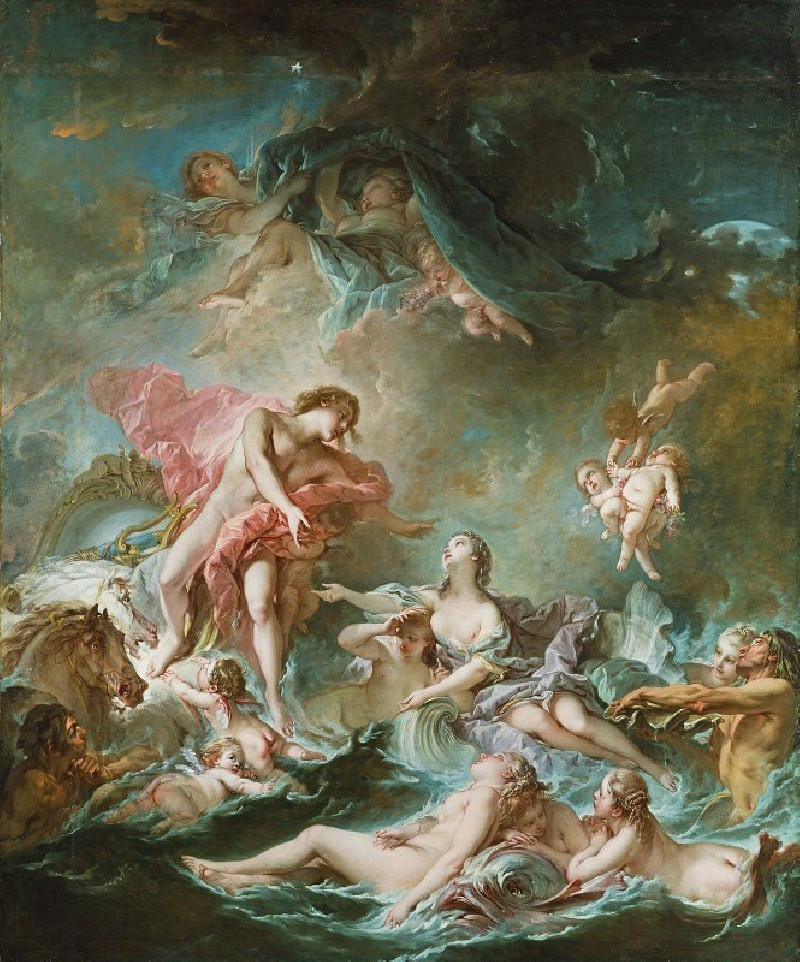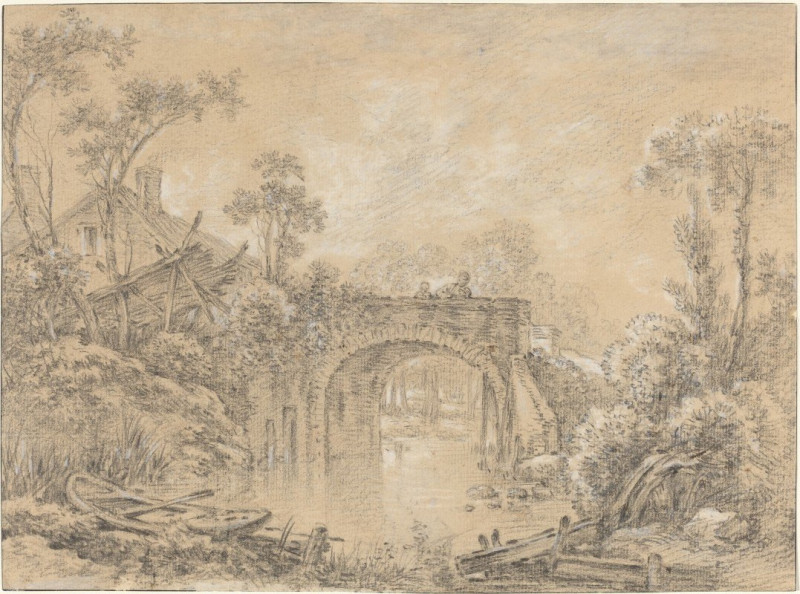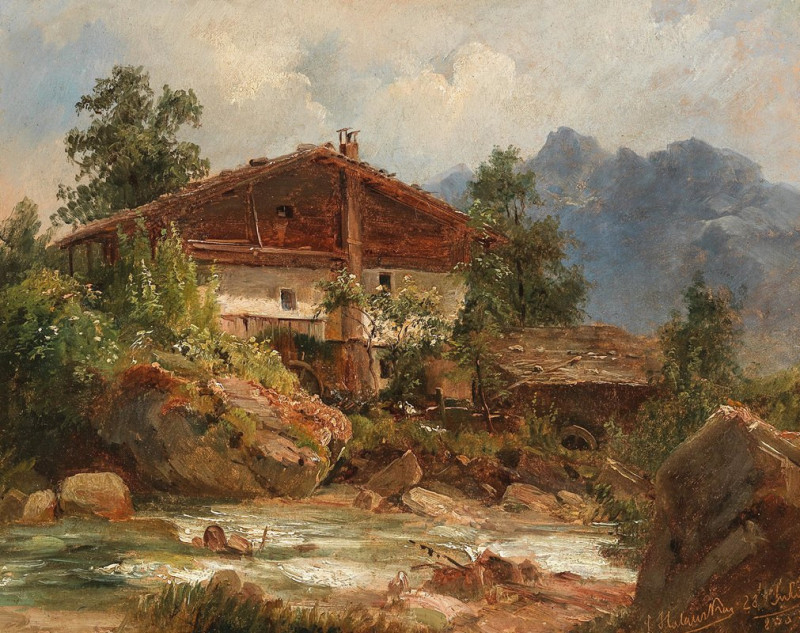Jupiter- in The Guise of Diana and Callisto (1763)
Technique: Giclée quality print
Recommended by our customers
More about this artwork
Francois Boucher's enchanting painting, titled "Jupiter in The Guise of Diana and Callisto," created in 1763, showcases the seductive allure and mythological storytelling that the artist is widely celebrated for. This particular work is a fine example of Boucher's expertise in the Rococo style, characterized by its romantic, soft focus on sensuality and playful mythological scenes.In the painting, Boucher tells the story from ancient Roman mythology of Jupiter, the king of the gods, who disguises himself as Diana, the goddess of the hunt, to ensnare the beautiful nymph Callisto. The deceitful transformation of Jupiter into Diana is depicted with extraordinary finesse, as he gently seduces the unsuspecting Callisto. The tenderness and intimacy between the two figures are poignantly captured through their close embrace and the subtle caress of Callisto's chin by Jupiter.Floating above this central scene are three playful cherubs, enhancing the painting’s light-hearted and ethereal mood. These cherubs not only add to the decorative elements typical of the Rococo era but also subtly underscore the divine playfulness of Jupiter’s character. The soft color palette dominated by pastel shades of blue and white further intensifies the dreamlike quality that is emblematic of Boucher's work.Bathed in a soft glow that emerges from the cloudy, fluid backdrop, this painting exemplifies Boucher’s mastery in creating dynamic compositions and his ability to evoke emotion through the delicate rendering of form and usage of color.
Delivery
Returns
François Boucher (1703–1770) was a French painter, engraver, illustrator and printmaker. He was a proponent of Rococo and had a huge influence in spreading the style throughout Europe. His art was idyllic and voluptuous with a high-toned palette of blues and pinks. He created designs for all decorative arts, porcelains and tapestries. Boucher also painted several portraits including his patroness Madame de Pompadour. He is one of the most celebrated decorative artists of the 18th century.














































